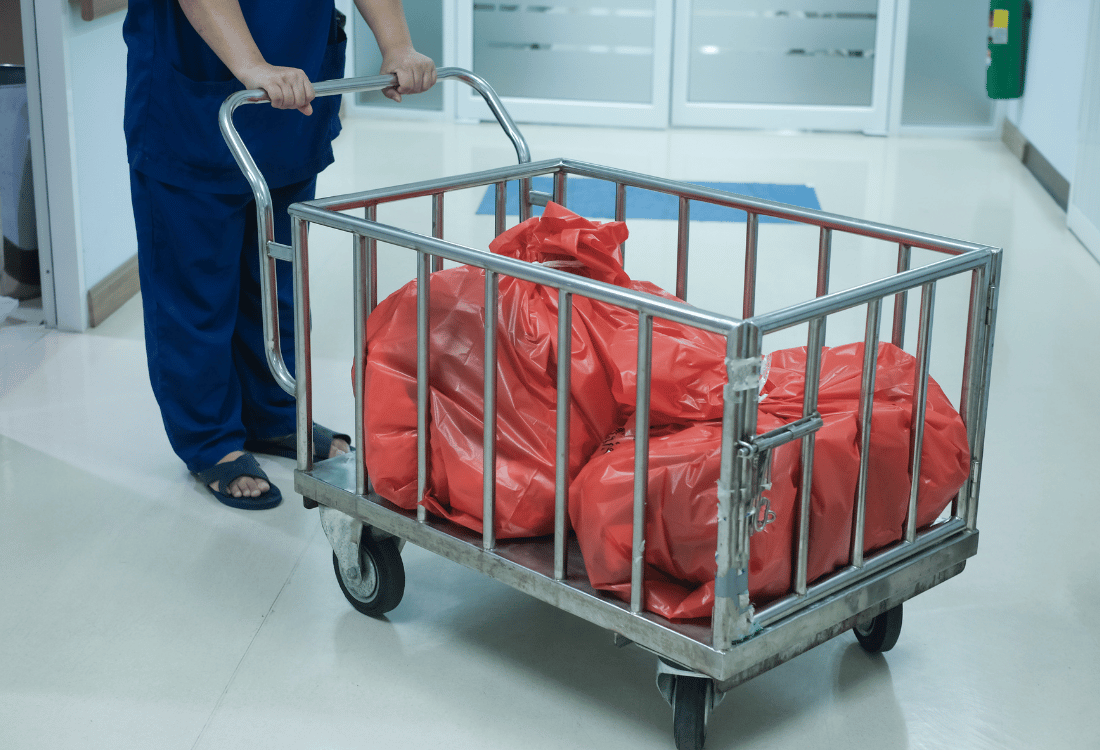Hygiene Control Best Practices For Body Bags And Laundry Bags In Hospitals

In hospital procurement and hygiene management, body bags and laundry bags are often treated in the same category, despite their widely different uses. Both items contain potential contaminants that must be handled and processed carefully and considerately to maintain the safety of hospital staff. This article provides a brief overview of hospital hygiene and infection control best practices relating to body bags and laundry bags.

The advantage of water-soluble laundry bags
The key to effective contamination control is to minimise exposure to pathogens. This is why many hospitals now recommend fully soluble laundry bags for contaminated or heavily soiled linens and bed sheets. These bags dissolve completely during the wash cycle, which minimises direct handling requirements by your staff, and minimises the cross-contamination risk. To maximise their effectiveness, it’s important to follow the correct bagging procedures, e.g. place contaminated linens directly into the soluble bags at the point of removal, fill bags no more than two thirds full, and seal securely to prevent leakage.
Colour coding systems
For different types of linen, it’s useful to implement a colour coding system to ensure proper handling and processing. For example, red laundry bags with a soluble dissolving strip could be used for infected or heavily soiled linen, while white bags may be used for regular or low risk linens.
Hospital body bags best practices
So far we’ve dealt with laundry bags and how water-soluble bags can improve hygiene and contamination control, but what about body bags? For body bags, the opposite principle applies. You do not want your body bags to be water-soluble at all. Each bag should, as far as possible, create a hermetically sealed bubble around the remains that prevents the escape of fluids and healthcare-associated infections during handling and storage.
The quality and nature of the bag material is the highest consideration. Your body bags should be durable and hygienic, with a surface that leaves no quarter for pathogens to take hold, and which makes it as straightforward as possible for your mortuary staff and handlers to maintain the highest levels of hygiene. It’s also recommended to use discrete body bags for different types of human remains and various scenarios in your hospital setting (e.g. for individuals known to have died of an infectious blood-borne disease), to avoid cross contamination.
Best practices crossovers
When handling either laundry bags or body bags, hospital staff should always wear the appropriate personal protective equipment, or PPE, which can include gloves, aprons, and facemasks. This is especially important when handling known contaminants or potentially contaminated linen or laundry bags. Staff should also practice thorough hand hygiene before and after handling.
Unsure of what you need? Talk to an expert from Slik Pak
As one of the UK’s leading suppliers of hospital body bags and laundry bags, we offer a wide range of high-quality products to help you maintain the highest standards of hygiene and infection control in your hospital. To discuss your requirements, please talk to one of our experts today.

Image Source: Canva
